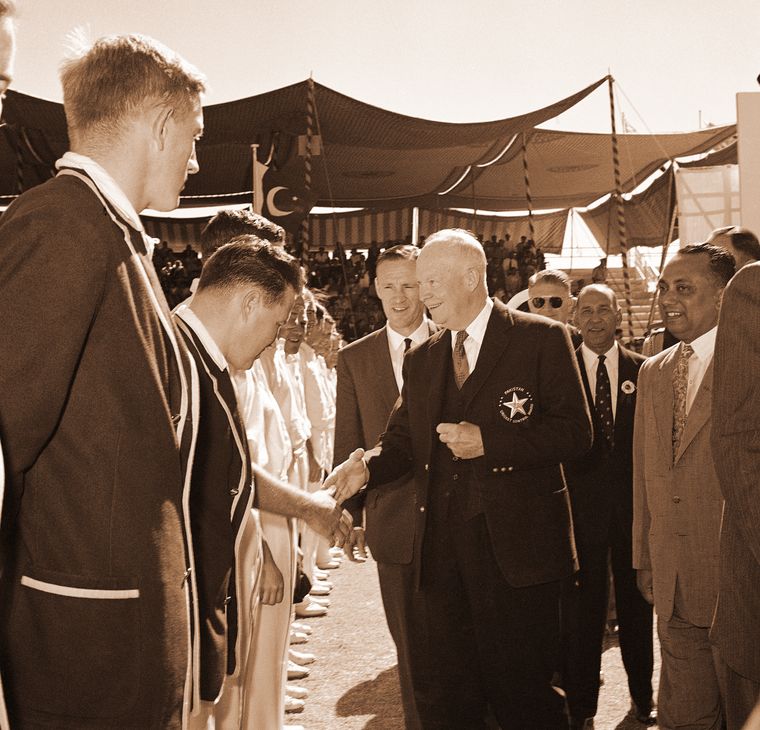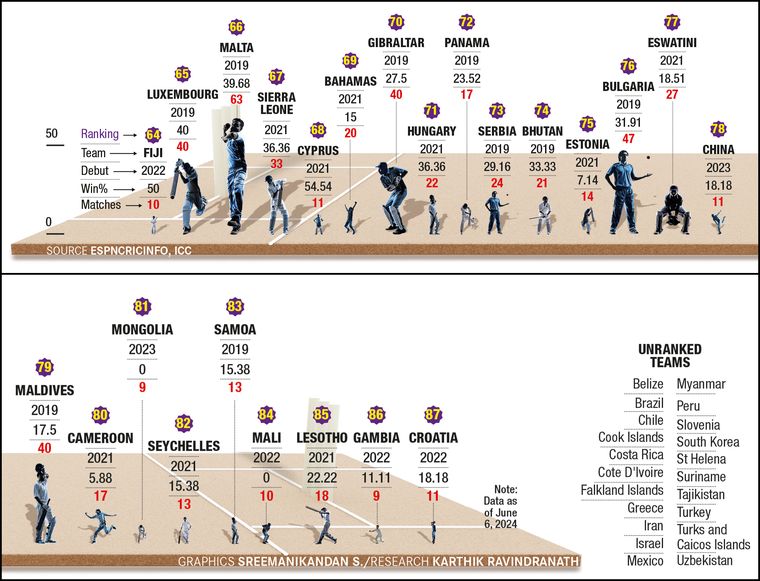Surbhi Gupta was in a race against time outside New York’s Nassau County International Cricket Stadium. Team India’s presser after its campaign opener against Ireland was over and Rohit Sharma’s men were on the way out. She had a few minutes to find the perfect spot to watch them boarding the team bus.
She did find a spot a little away from the crowd. Apart from a middle-aged guard hired by the stadium management, she was largely alone as she waited. “Maybe your main man has left in a car or something...,” the guard said. Having seen Rohit and Virat Kohli board the bus after a warm-up game at the same venue a few days prior, Gupta knew that was not the case. She told him the “main man” and his buddies would be out soon.
“You know, the FBI is here... these guys should be such stars,” said Taylor (name changed), amused by the craze. Gupta confirmed they were indeed celebrities back home and the security would only be tightened further for the India-Pakistan contest. “Sad I would not be on duty for that game,” he said. “Maybe I will tune in from home. But what’s the point, I don’t get the rules.”
Taylor, like most Americans today, is unaware that Benjamin Franklin had brought a copy of 1774 Laws, the then official rule book of cricket, to the US in 1754, 38 years ahead of the formation of India’s first cricket club in Calcutta. It is also unlikely that they know that when the USA met Canada for the first recorded international cricket game in New York’s St George’s Club (Sep 24-26, 1844), the first summer Olympics of modern history was still 52 years away.
The US is not a land yet to embrace cricket, as most think. Rather, it was a pioneer of the game, which attracted American spectators in thousands two centuries ago.
Take a look at this diary entry. “I rose at 6 and read a chapter in Hebrew. About 10 o’clock Dr. Blair, and Major and Captain Harrison came to see us. After I had given them a glass of sack we played cricket. I ate boiled beef for my dinner. Then we played at shooting with arrows... and went to cricket again till dark.” Planter William Byrd of Virginia jotted this down in 1709, 173 years before the Ashes rivalry.
“Cricket certainly attracted large crowds and ticket sales of 20,000 for big games were common,” Professor Tim Lockley of the University of Warwick’s School of Comparative American Studies told THE WEEK. “It is the first spectator sport for a team game. The others in this era were horse racing and boxing. So, there was an appetite for sporting entertainment and it was linked to the rise of the idea of ‘leisure’ and the promotion of activities that were not drinking, gambling and prostitution.
“It was not a working-class sport. It had elite players, especially in Philadelphia and New York, but elsewhere it was played by white-collar professionals.”
After losing to Canada in the 1844 encounter, the Americans played return fixtures. Team Captain Robert Tinson, James Turner and Sam Wright were some of the notable names of the time as the US finally defeated Canada in Harlem in 1846, before inviting the British team for a tour in 1859. Reports claim that the Americans notified the visiting players that the journey would be fully covered and offered them handsome rewards, too.
As America’s growing population spread west and south, so did cricket. Abraham Lincoln was in the crowd when Chicago played Milwaukee in 1849. By then, an estimated 10,000 Americans were playing the game, and many more were watching, a report claimed. In 1878, around 15,000 Philadelphians cheered as their boys drew with Australians, who were gradually establishing themselves as a force. In another 15 years, they would actually beat the men from Down Under.
Not only did the Americans play cricket, but they were pretty good at it.
Philadelphia-born J. Barton King claimed 87 wickets at an 11.01 average in the 1908 tour of England, a record that remained unbroken for 50 years. “Every neighbourhood in Philadelphia had a cricket team, and all the teams supplied players for the famous Gentlemen of Philadelphia, who toured England in the 19th century,” John Douglas, acting director of athletics at Pennsylvania’s Haverford College, said in a 2006 interview.
There was a time when Haverford was engaged in a bitter rivalry with University of Pennsylvania over the Intercollegiate Cricket Association (ICA) (1881-1924) Championship. Such college competitions are a cornerstone of the growth and sustenance of all sports in the US. Stars who dominate these games are often “drafted” while representing schools or colleges. Had the ICA managed to stay alive, the BCCI, ECB and Cricket Australia might have had another titan among their ranks.
But how did the game’s golden days eventually end?
Though cricket outlived the dislike for “everything English” after the American Revolution, it ultimately failed to survive the Civil War. Baseball swallowed it completely over time.
Also Read
- Shubman Gill's T20 World Cup 2026 exclusion: Was India's selection panel divided in their stance? EXPLAINED
- What tech giants told their H-1B employees as many get stranded outside US after visa renewal delay
- WATCH | US seizes non-sanctioned oil tanker 'Centuries' off Venezuelan coast in 'lightning strike operation'
- Was Shubman Gill fit to play Ahmedabad T20I? Reports suggest BIG TWIST before India's T20 World Cup squad announcement
- Four active players from India's title-winning squad in T20 World Cup 2024 squad set to miss T20 World Cup 2026
- Epstein’s brother says Trump ‘was in Jeffrey’s office all the time’; Justice Department hits deadline to release files
“There are many possible explanations [for baseball’s ascent], but certainly, the desire for an ‘American’ game, which baseball claimed to be, played an important role,” said Lockley. “Also, baseball needed just a bat, ball and bases. So it was simpler and cheaper to play. From a high in 1860, the Civil War disrupted cricket as most young men went off to fight, and 6,00,000 of them were killed. The South was economically and socially devastated and had other things to think about after the war.”
By the second decade of the 20th century, cricket had all but perished in the country. This downfall is evident in the slideshow in the history section of USA Cricket’s official website. The ICC admitted the USA as an Associate member in 1965, 36 years after The American Cricketer, a sports magazine established in 1877, went out of print.
Fast forward to June 2024, when the US team, playing a World Cup on home soil, beat former champions Pakistan in New York―65 years after Dwight Eisenhower became the first US president to watch a cricket Test anywhere in the world. He watched the match in Karachi.
A month ago, the ICC granted Major League Cricket List A status. Maybe, just maybe, history is coming full circle in American cricket.




